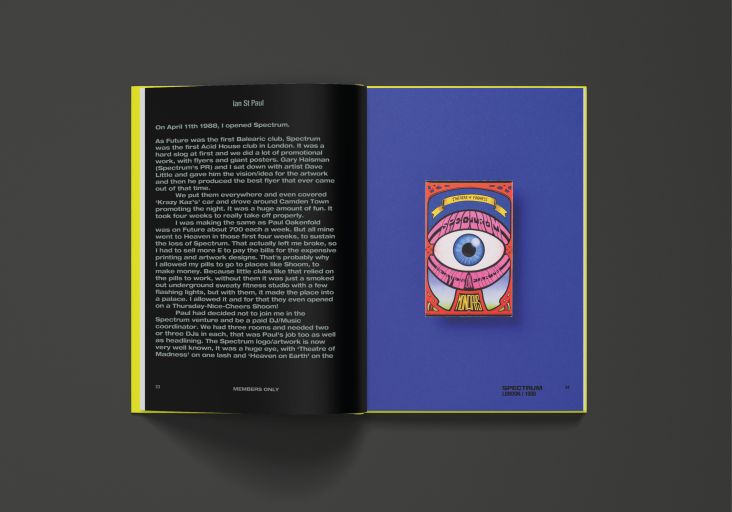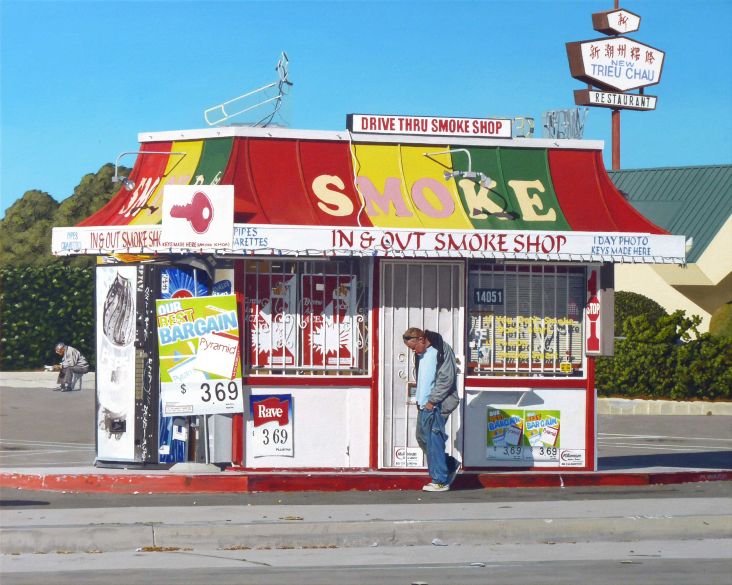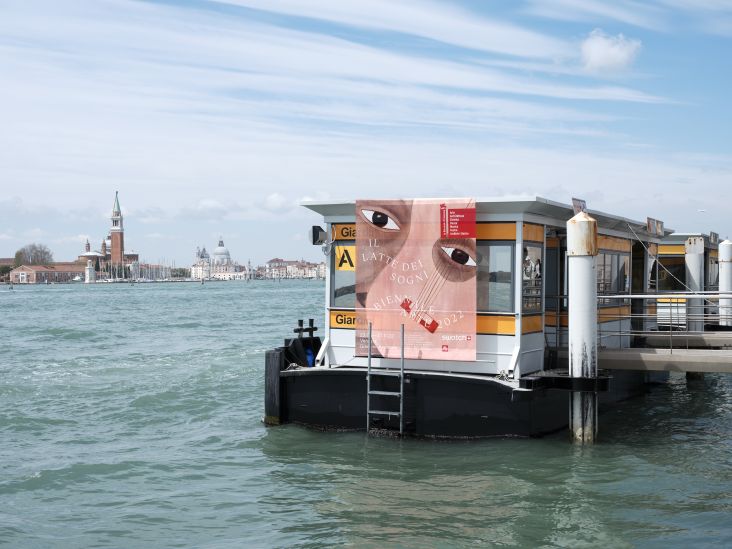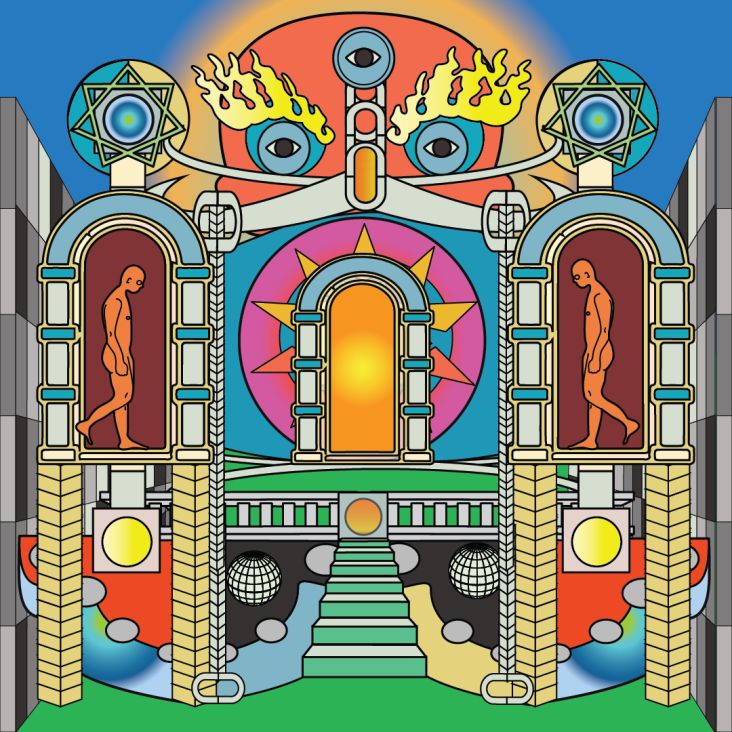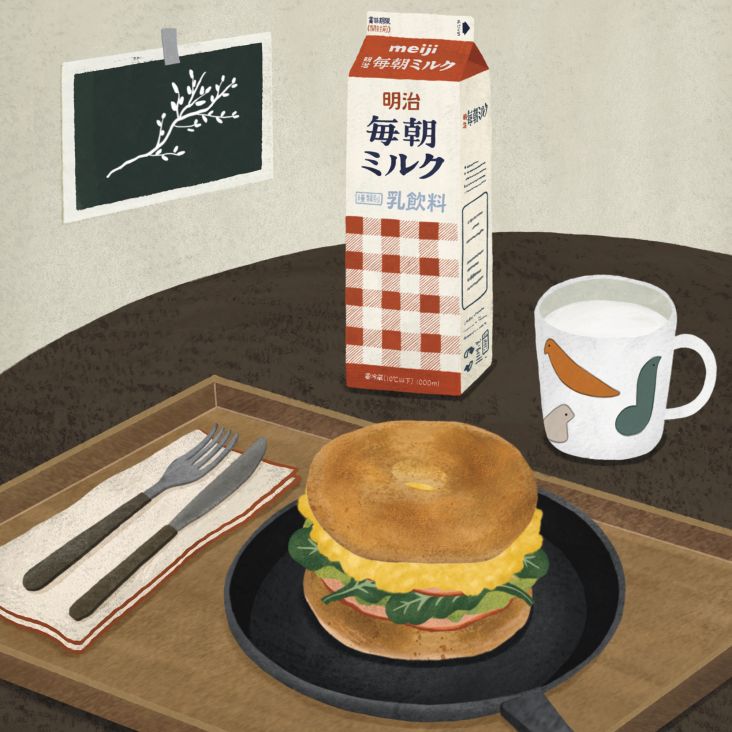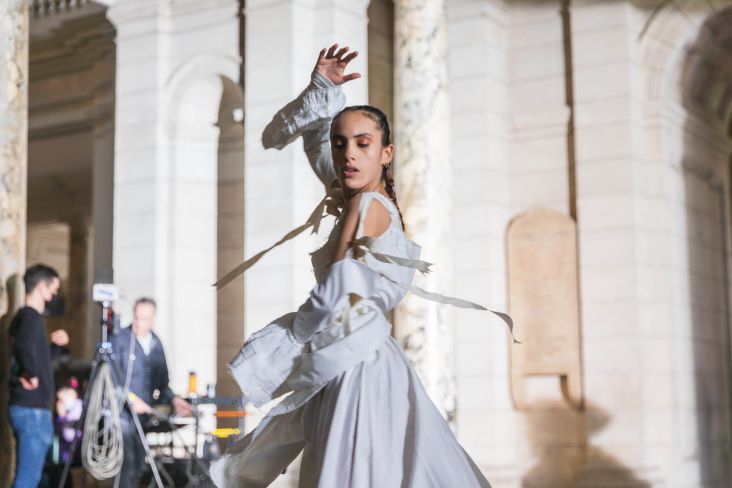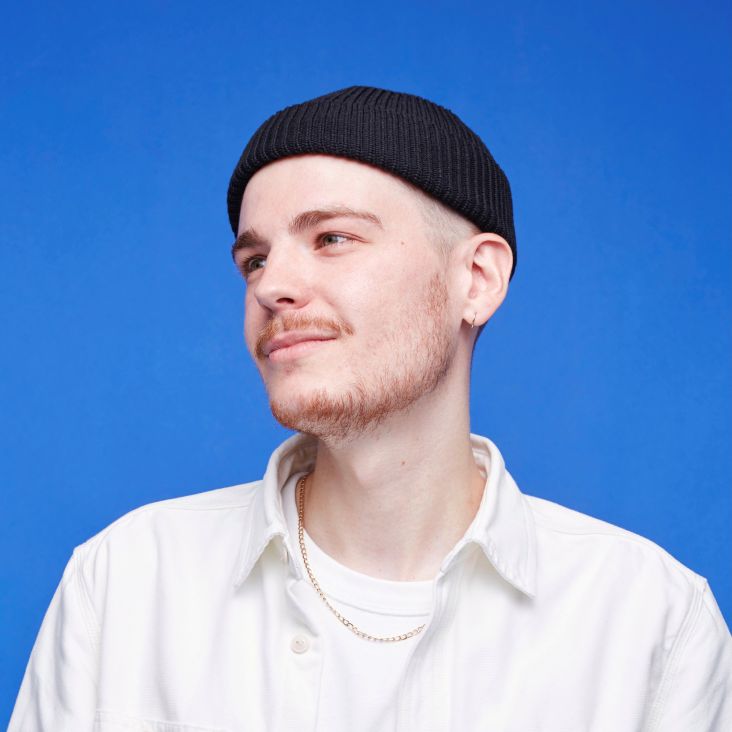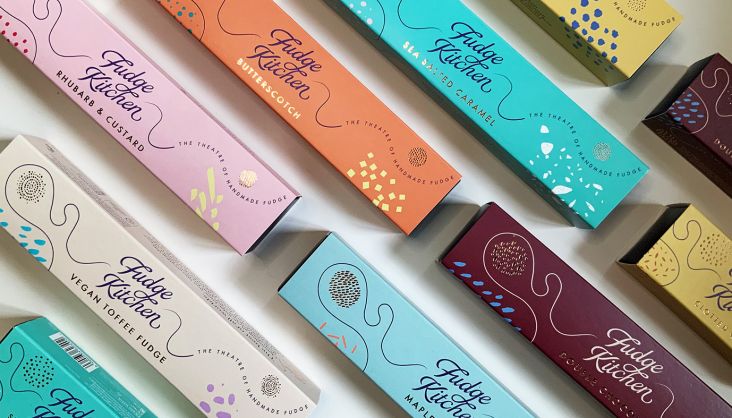Shawn Huckins gives new meaning to dirty laundry in his evocative paintings
The painter, who's based in New Hampshire, stacks fabrics on fabric in his works to question our sense of identity.
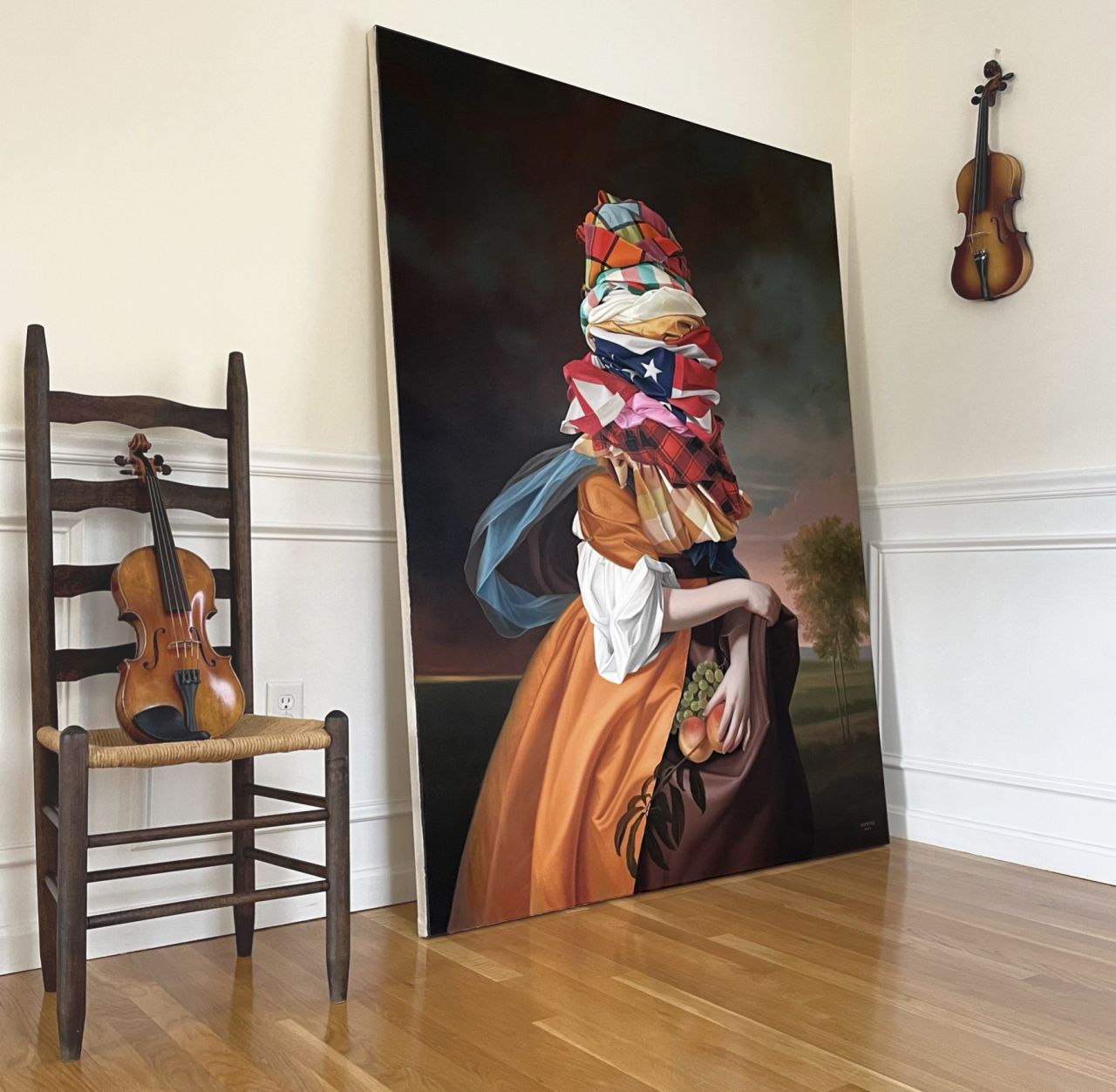
American Portrait I: Elizabeth Murray (after Copley) in situ © Shawn Huckins
Washing your clothes is a universal chore – we've all been there, socks stacking up and being left with the odds, forcing you to finally stick a load on. But Shawn Huckins, an artist based in southwest New Hampshire, has given this errand new meaning. In his new series titled Dirty Laundry, which will be on view at Duran Mashaal Gallery in Montréal this June, Shawn looks at the notion of the fabric, the sheets that cover us, the jumpers that warm us and the scarves we adorn ourselves in. "To be covered is to be comforted, protected and hidden," he explains in his artist statement about the project. "To wit, the cloak is both a garment and an action to shield from sight."
In this sense, clothing is applied to conceal, but equally, the fabrics we choose often reflect our identity "and how we want others to see us," he adds. "Of course, we don't express all facets of our identity. Some things we hold near out of habit, nature, or fear of ridicule. We all have dirty laundry, literally and figuratively."
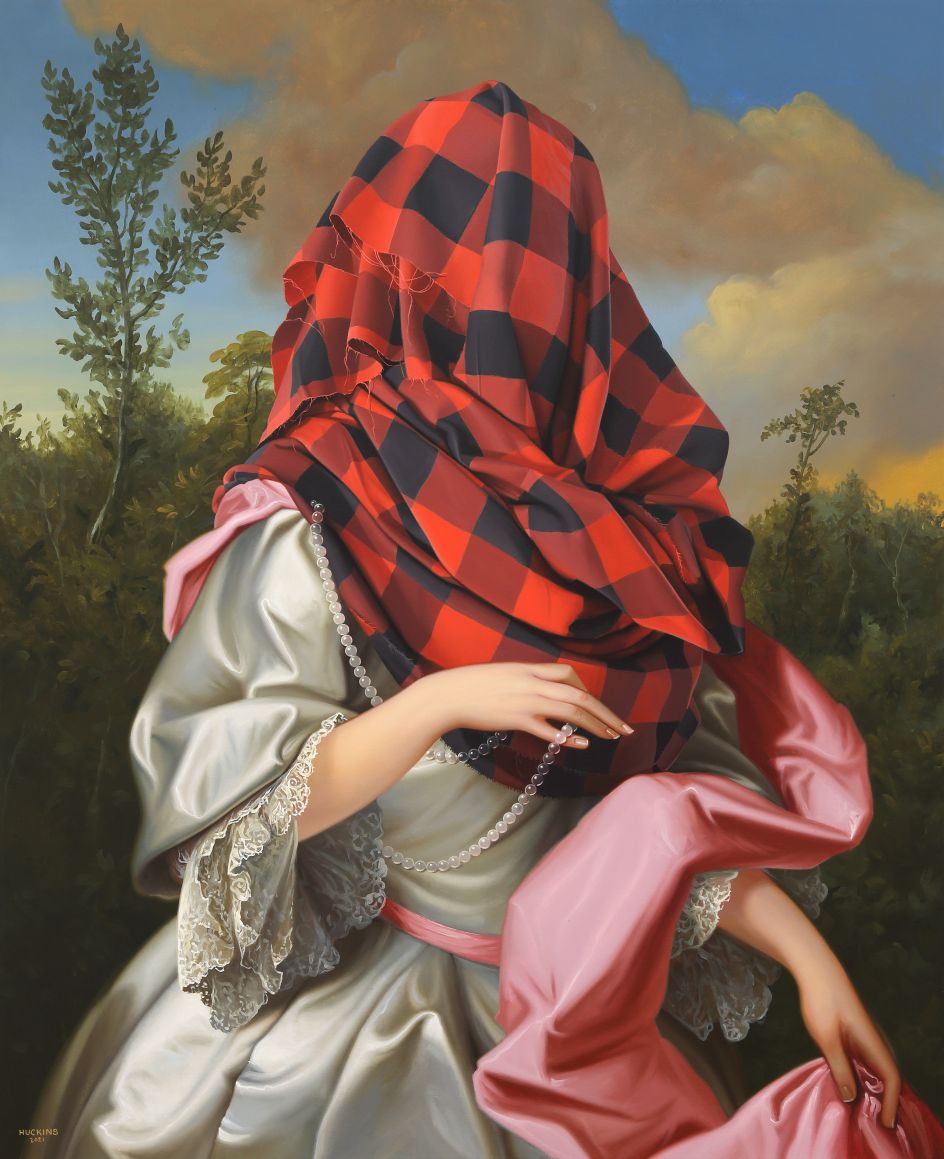
Red and Black: Mrs. Freeman Flower (after Highmore), 2021 © Shawn Huckins
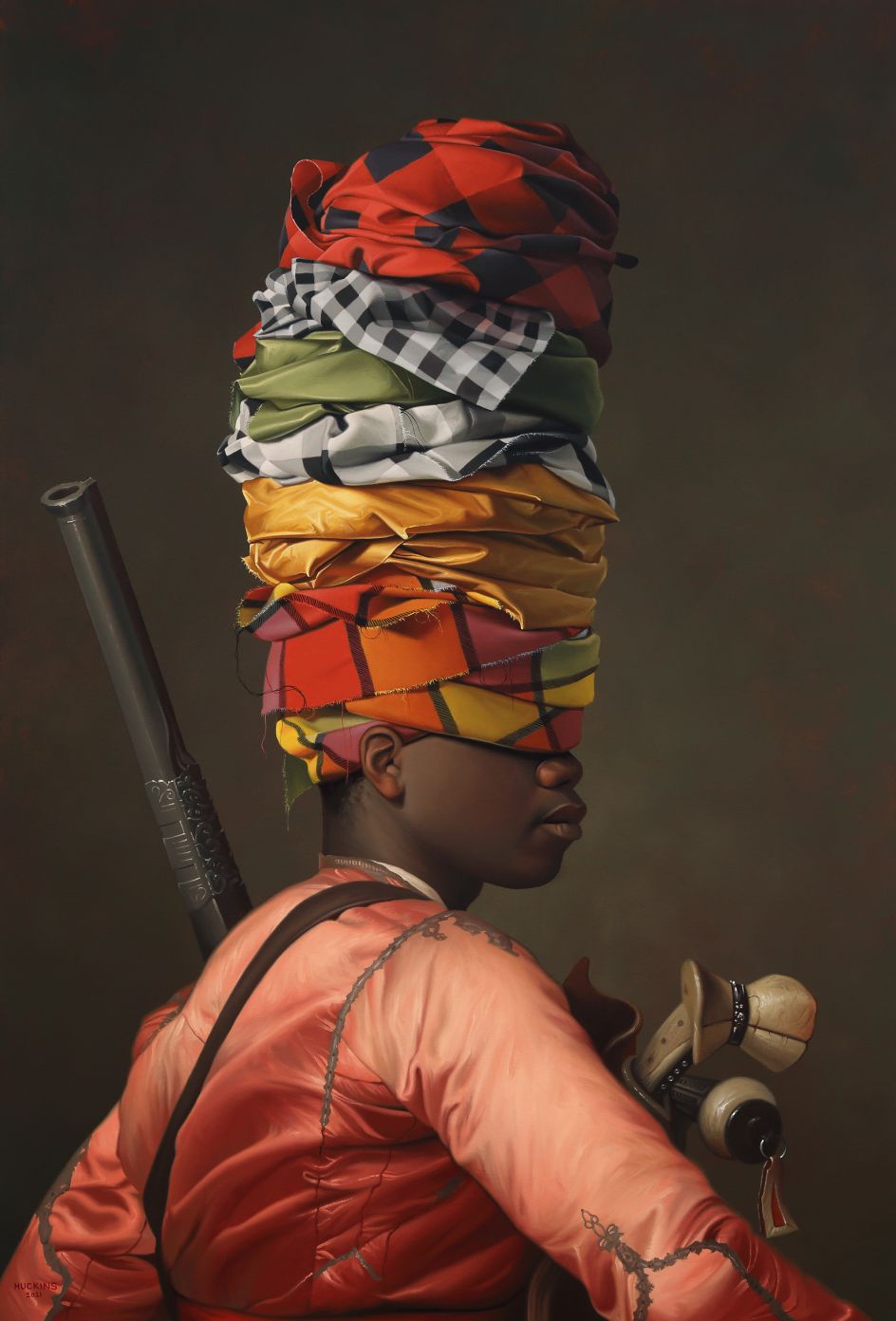
Various Fabrics, Bashi-Bazouk (after Gerome) © Shawn Huckins
The works are vibrant and bold, provocative in how they reconstruct are views of self-image and how we cover ourselves in fabrics. The title of the series, Dirty Laundry, also denotes a connection to the personal – in this case, the private life of one's dirty clothing that often remains hidden from public view. "The phrase is defined as personal or private affairs that one does not want to be made public as they could cause distress and embarrassment," he pens on the subject. To illustrate this, Shawn paints on top of a minimalist background – the type that's traditional seen in portraiture – before lavishing it with colourful fabrics placed over the subject's face.
Shawn refers to his style as traditional American portraiture that explores questions of "what, how much and how well we share and hide". And we couldn't agree more. Sculptural and enigmatic, the fabrics appear stacked and precarious as if they might fall or collapse at any given moment. Is this the same for a person's private life? There's much to unpack in Shawn's paintings, and, in a nutshell, this is exactly what he wants from the viewer – it's a chance to think, dwell and assess our relationship with material things, like a fabric. "Dirty Laundry allows us to question the security of our own concealments," he states.
So, for now, he leaves us with some questions to ponder: "What are we concealing from ourselves and others? What would it mean for the parts we conceal to be exposed? How would others react to our dirty laundry?"
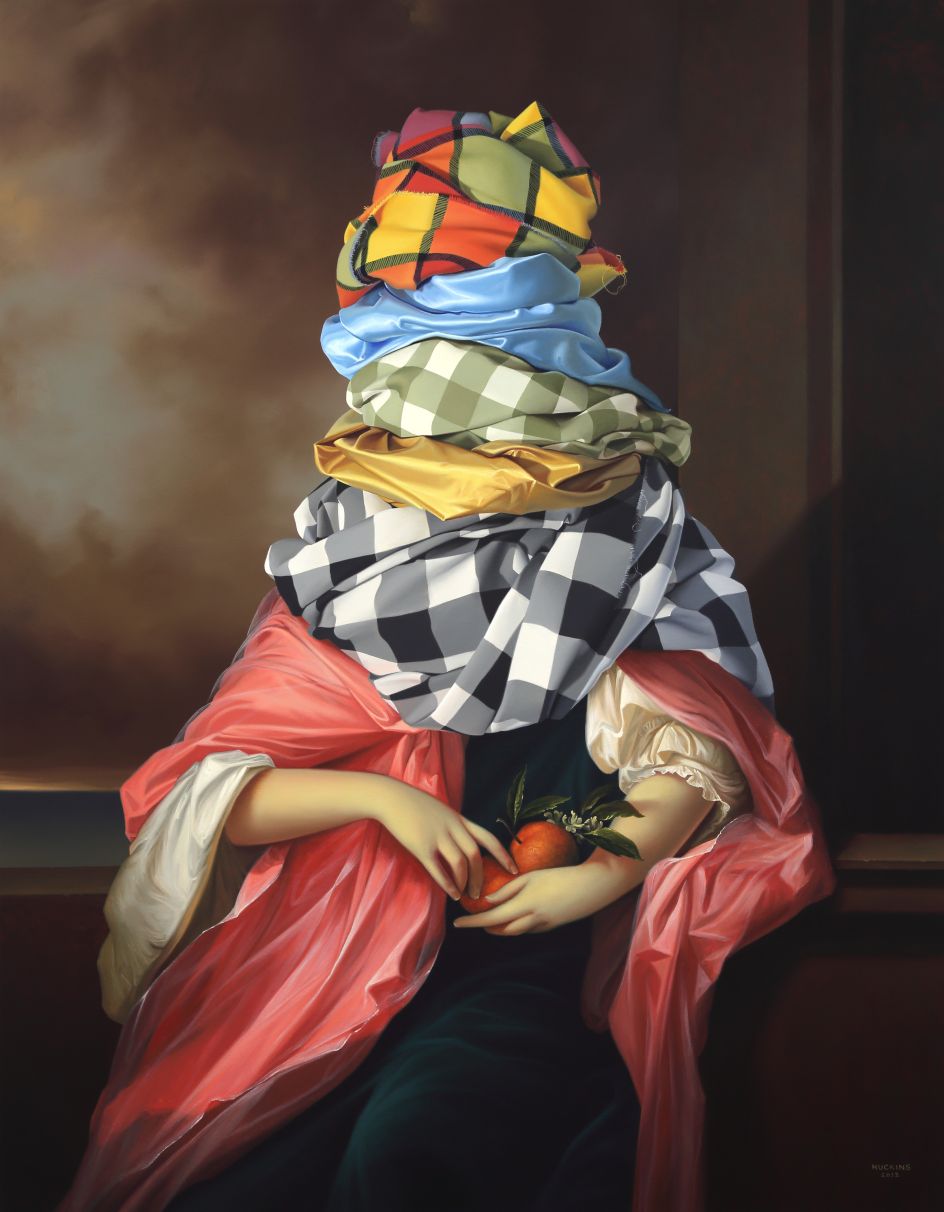
Various Fabrics: Margareta Rees (after van der Werff), 2022 © Shawn Huckins
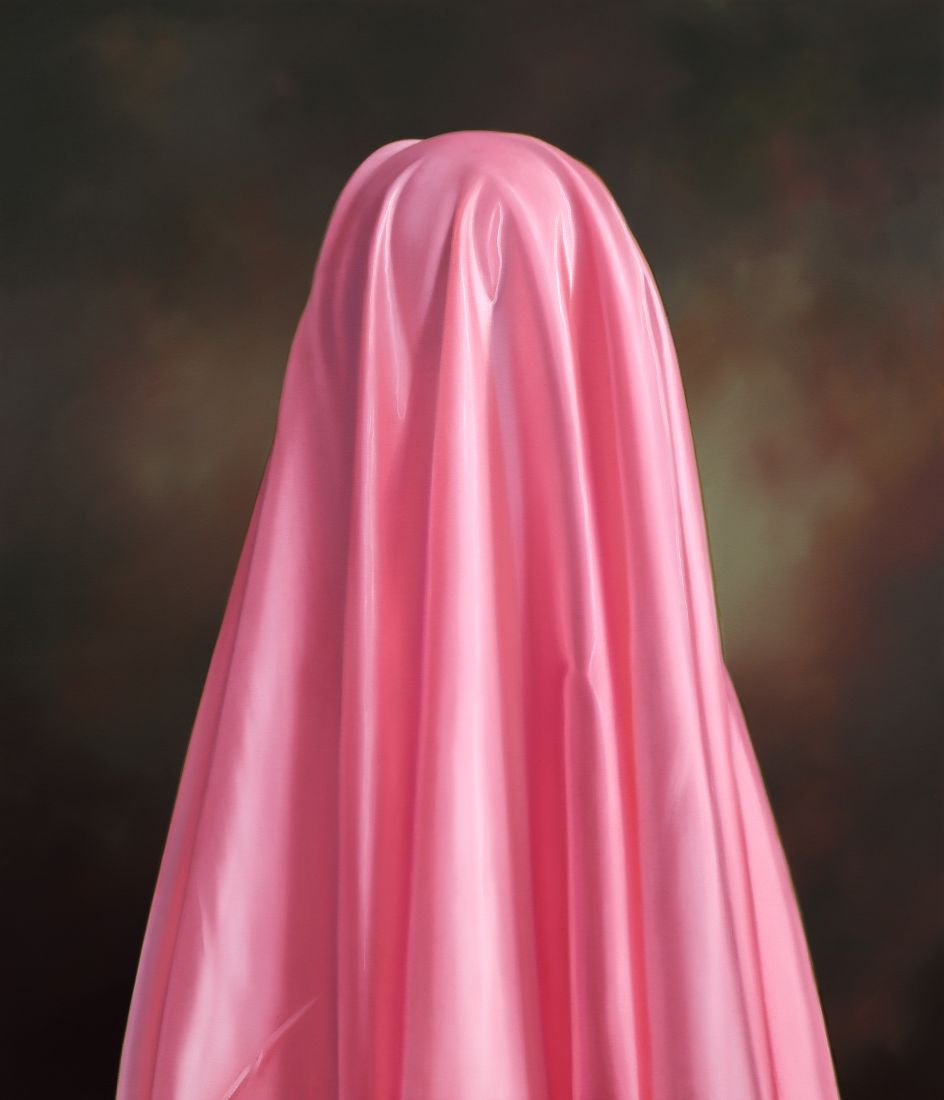
Portrait of A Gentleman (Pink), 2021 © Shawn Huckins
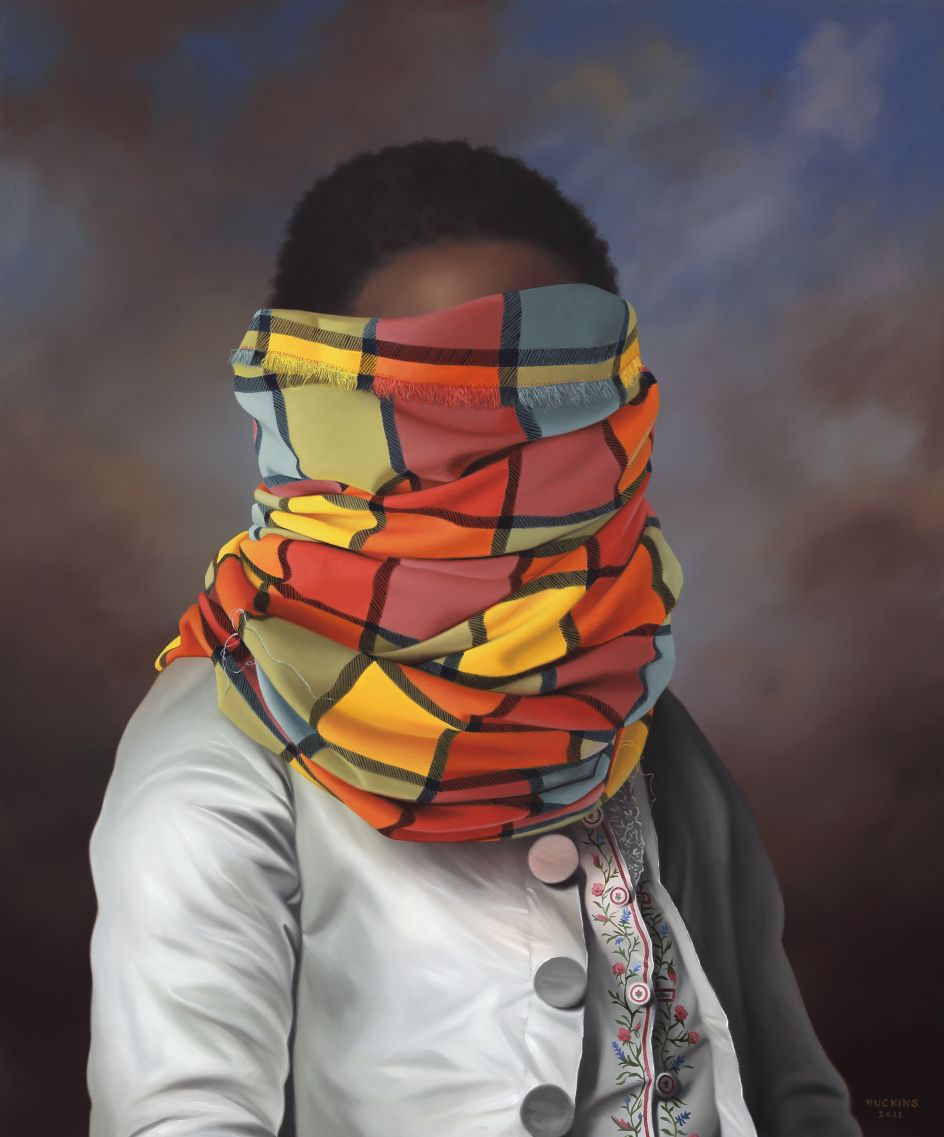
Pattern No. 3: Portrait of A Youth In An Embroidered Vest (after Lemoine), 2022 © Shawn Huckins
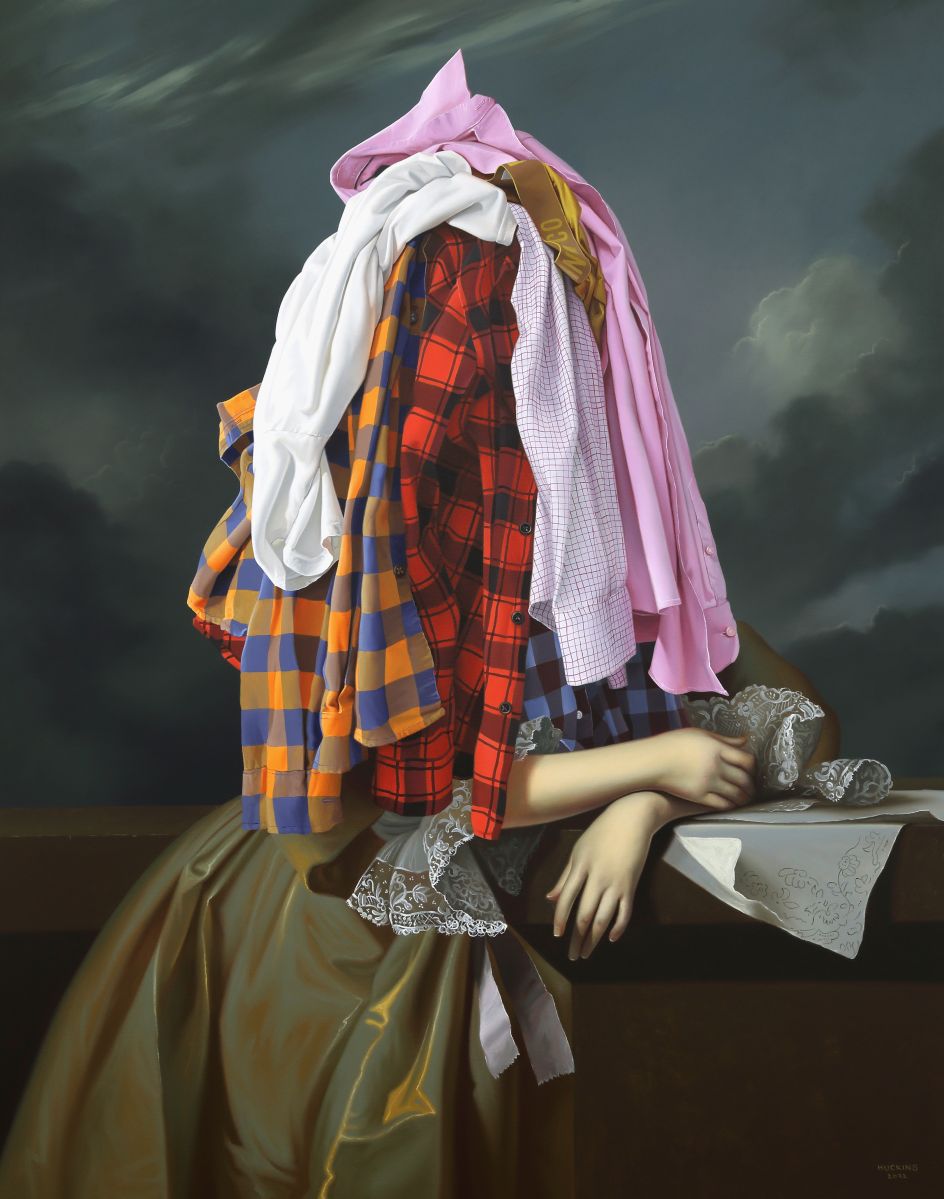
The Artist's Wardrobe: Mary Greene (after Copley), 2022 © Shawn Huckins
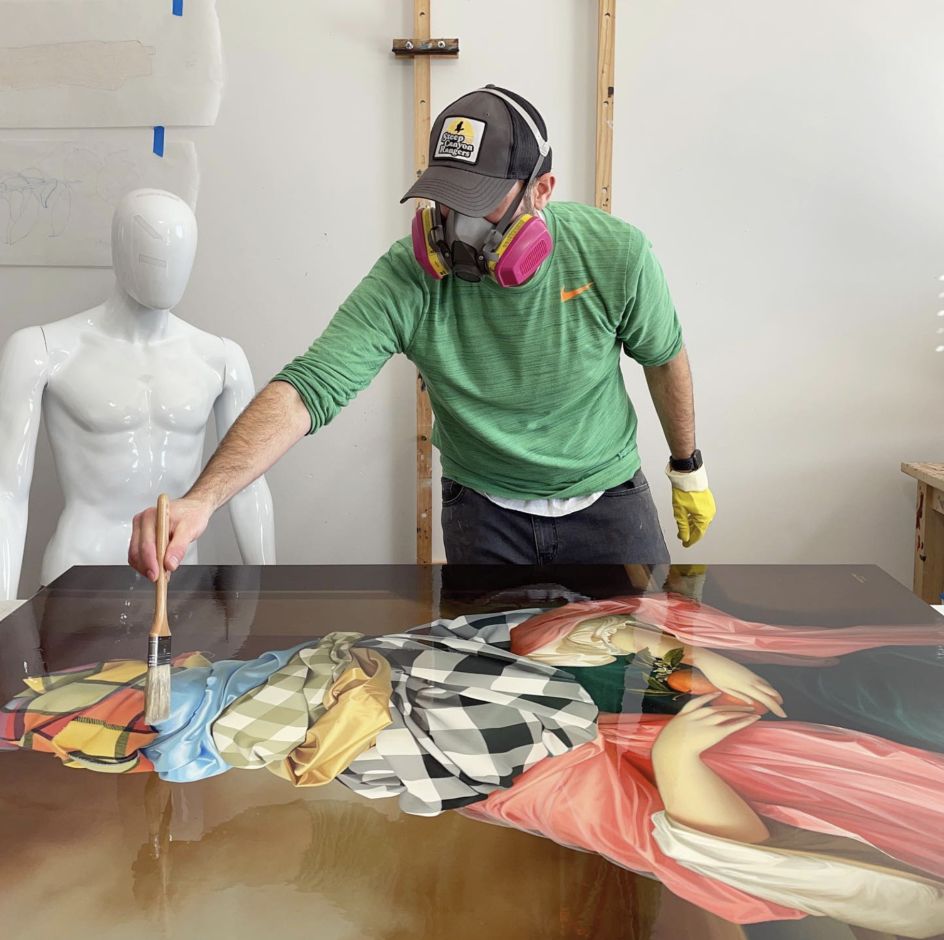
Shawn Huckins in his New England studio.







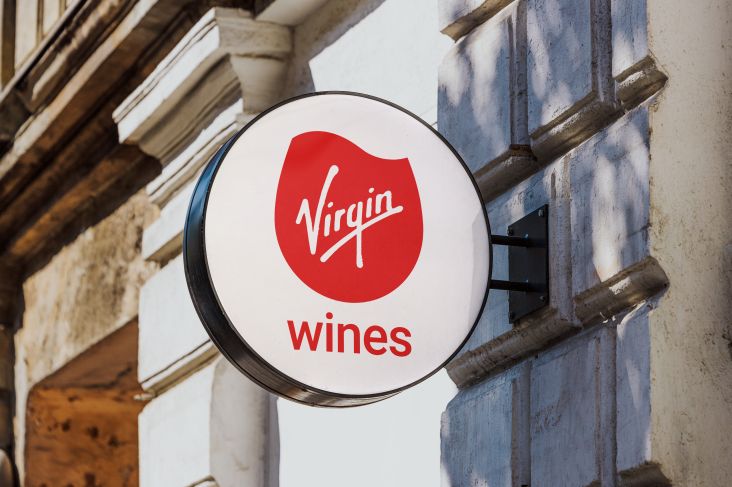
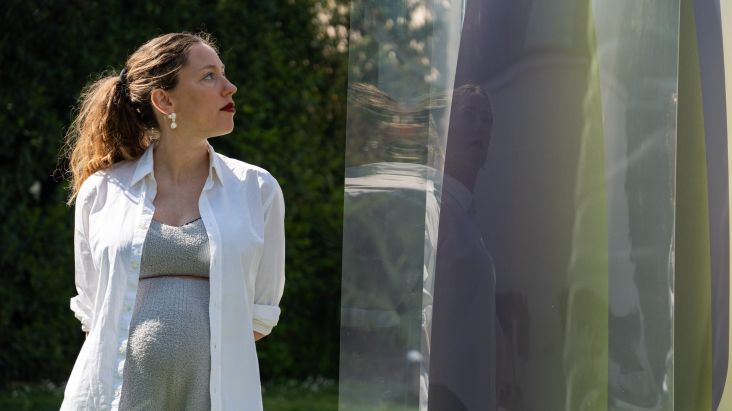
](https://www.creativeboom.com/upload/articles/86/862919952c0ad18439004228895a431dc6e45ffc_732.jpg)




